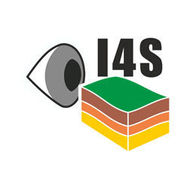Abstract
Agroecosystem models are widely used to assess effects of management, site properties and changing climate on crop production and ecosystem services. However, analysis is often focused on specific crops, especially in climate change impact studies. Modeling of crop rotations is often limited by the capability of crop models to run outside the growing season or to cover all crops within a rotation. The agroecosystem model HERMES comprises a generic crop model approach, which allows to extent the spectrum of crops through the generation of new parameter files. Modeling crops within the context of a rotation provides a measure to account for i) carryover effects on crop growth from previous seasons, ii) long term trends in soil fertility and iii) effects of cropping systems to the environment, which are often more pronounced during the fallow period. However, a transient simulation across multiple years implies the risk that model errors accumulate. Identification of model weaknesses requires experimental data, which cover various state variable and flux outputs of the model to ensure that model results are consistent. A quantitative scheme to evaluate and label data sets regarding their suitability for model calibration and validation is presented. Case studies with HERMES are presented to show the capability, its sensitivity to spatially variable inputs, and deficits of the model to reflect effects of cropping systems on crop production and environment and to demonstrate the practical applicability for management decisions.
